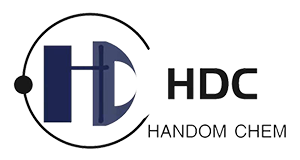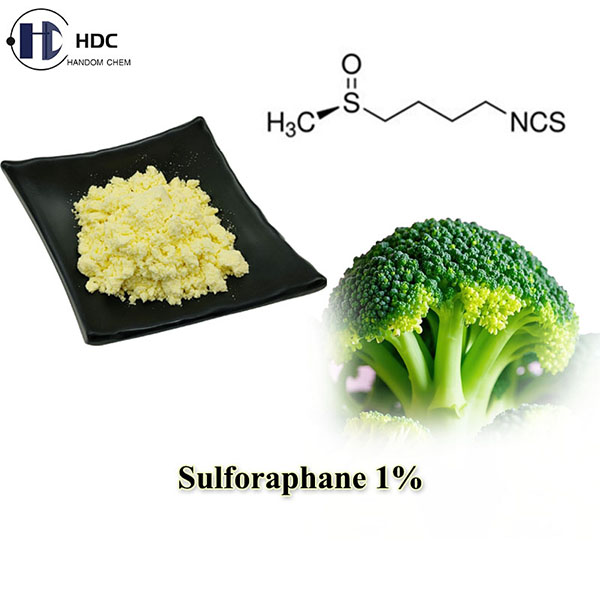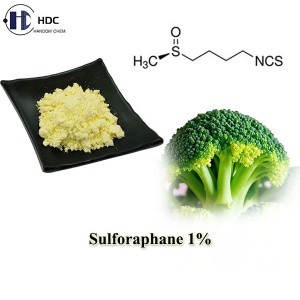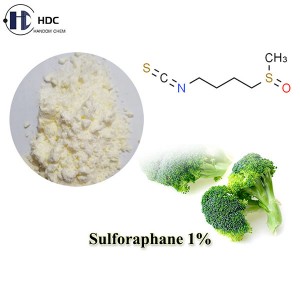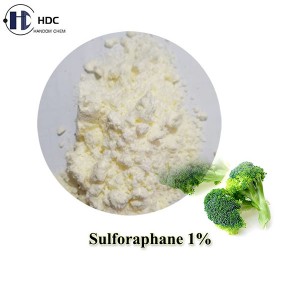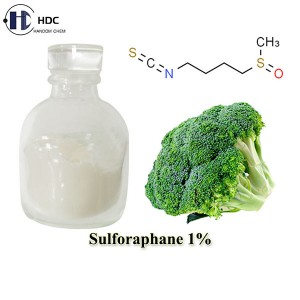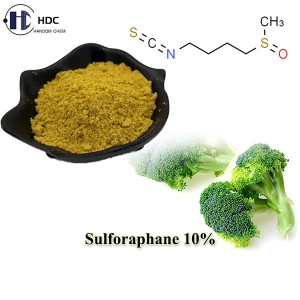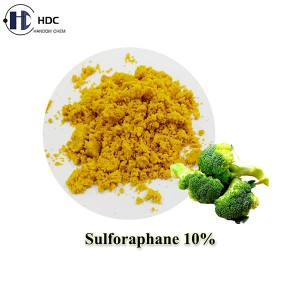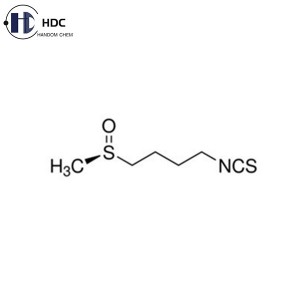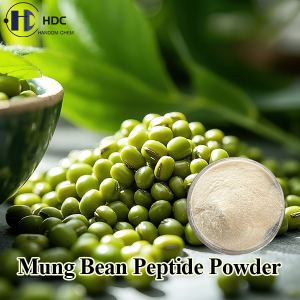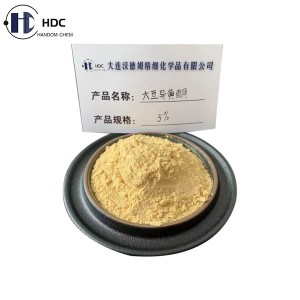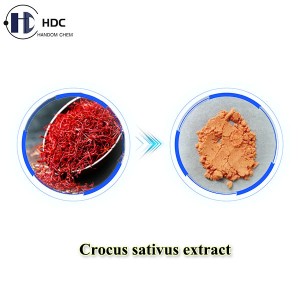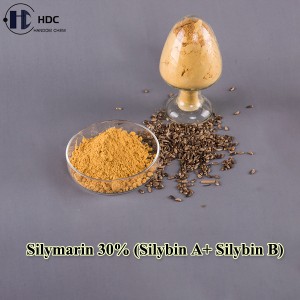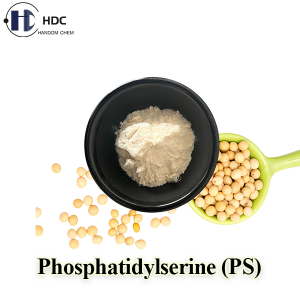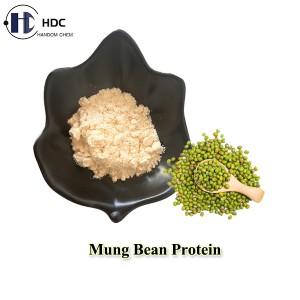Sulforaphane
The Introduction of Broccoli Seed Extract -Sulforaphane:
Sulforaphane (1-Isothiocyanato-4-methylsulfinylbutane) is an isothiocyanate, the molecular formula is C6H11NOS2, the molecular weight is 177.29, it is mainly produced by hydrolysis of glucoraphanin (4-Methylsulphinylbutyl glucosinolate) in Brassica plants by myrosinase.
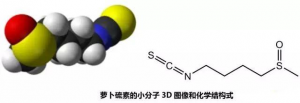
Common Brassica plants include kohlrabi, Chinese flowering cabbage, mustard greens, common head cabbage, broccoli, etc. Among them, broccoli seeds have the highest sulforaphane content, which is about 15 to 550 times higher than other varieties.
Specifications of our Sulforaphane 1% (Broccoli Seed Extract):
| Inspection Items | Standard Requirements | Inspection Methods | |||
| Colour | Yellow | Visual | |||
| Taste and Smell | With the unique smell and taste of broccoli seed extract, no odour | Smell | |||
| Organizational Form | Powder, no caking | Visual | |||
| Water (g/100g) | Not more than 7.0 | GB5009.3 | |||
| Sulforaphane (g/100g) | Not less than 1 | HDC-QA-SOP081-00 | |||
| Total plate count (CFU/g) | n | c | m | M | GB4789.2 |
| 5 | 2 | 10^4 | 5×10^4 | ||
| Escherichia coli (CFU/g) | n | c | m | M | GB4789.3 |
| 5 | 2 | 10 | 10^2 | ||
| Mould (CFU/g) | Not more than 50 | GB4789.15 | |||
Specifications of our Sulforaphane 10% (Broccoli Seed Extract):
| Inspection Items | Standard Requirements | Inspection Methods | |||
| Colour | Yellow | Visual | |||
| Taste and Smell | With the unique smell and taste of broccoli seed extract, no odour | Smell | |||
| Organizational Form | Powder, no caking | Visual | |||
| Water (g/100g) | Not more than 7.0 | GB5009.3 | |||
| Sulforaphane (g/100g) | Not less than 10 | HDC-QA-SOP081-00 | |||
| Total plate count (CFU/g) | n | c | m | M | GB4789.2 |
| 5 | 2 | 10^4 | 5×10^4 | ||
| Escherichia coli (CFU/g) | n | c | m | M | GB4789.3 |
| 5 | 2 | 10 | 10^2 | ||
| Mould (CFU/g) | Not more than 50 | GB4789.15 | |||
The Main Functions of Broccoli Seed Extract -Sulforaphane:
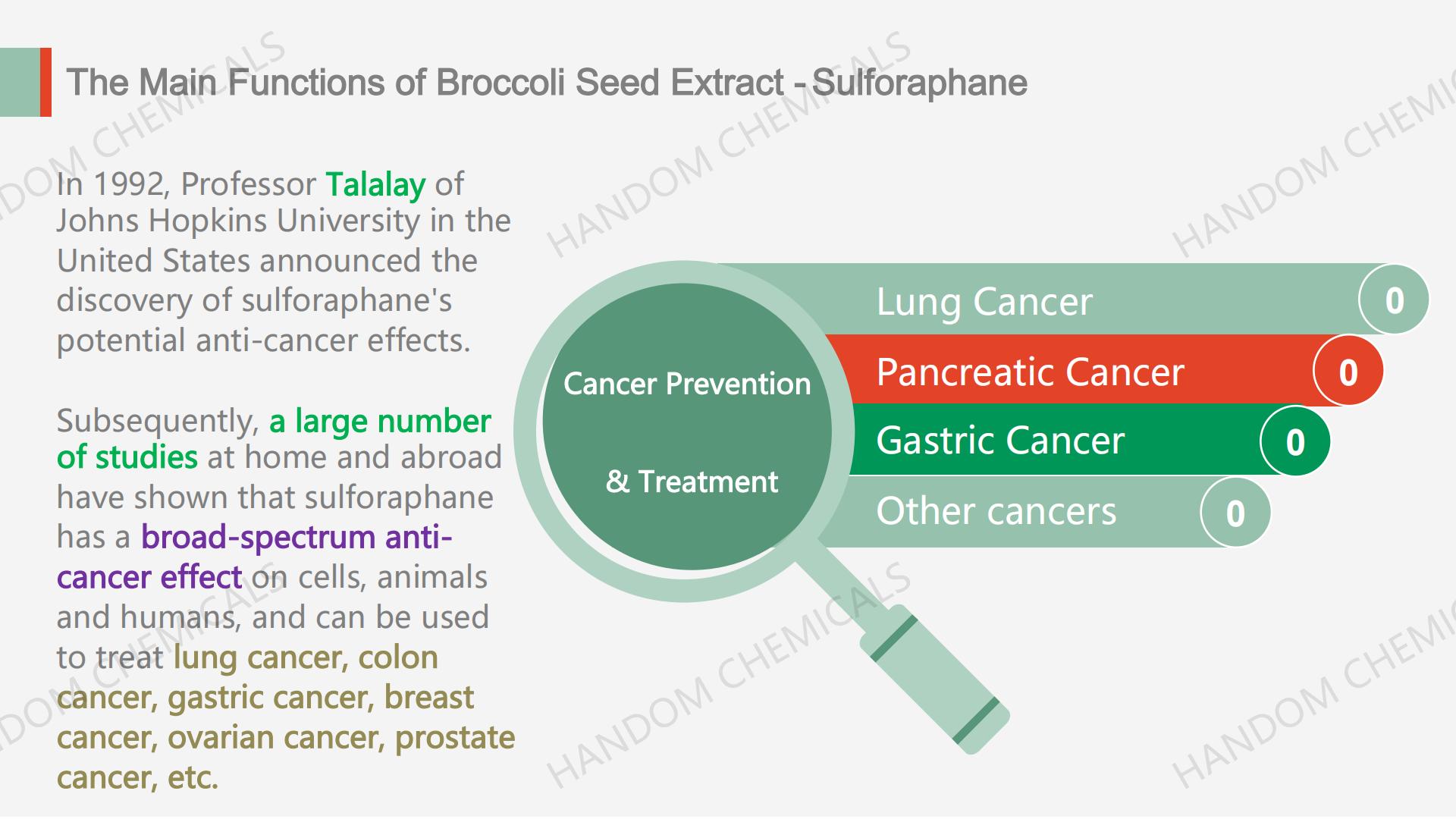
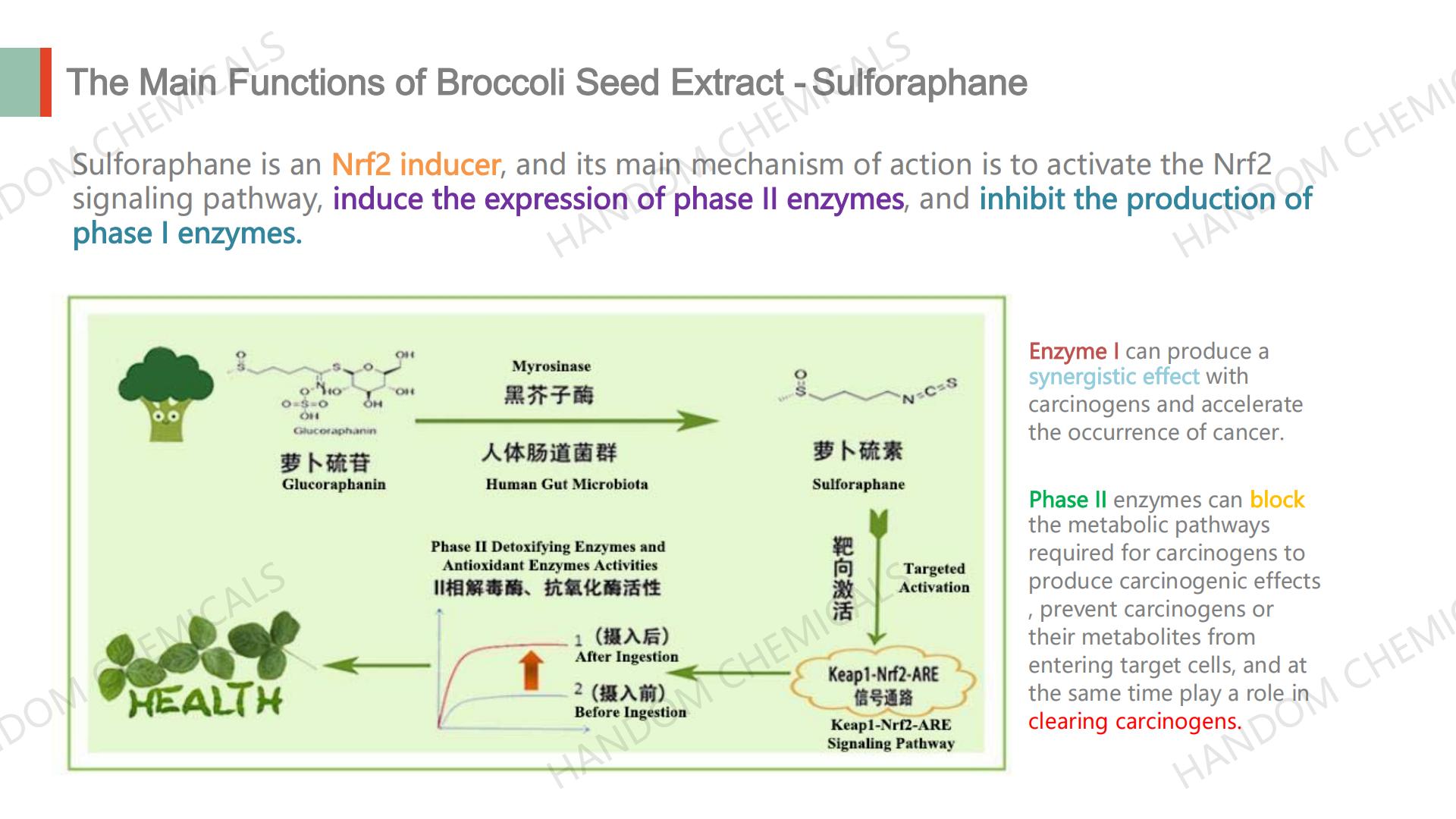
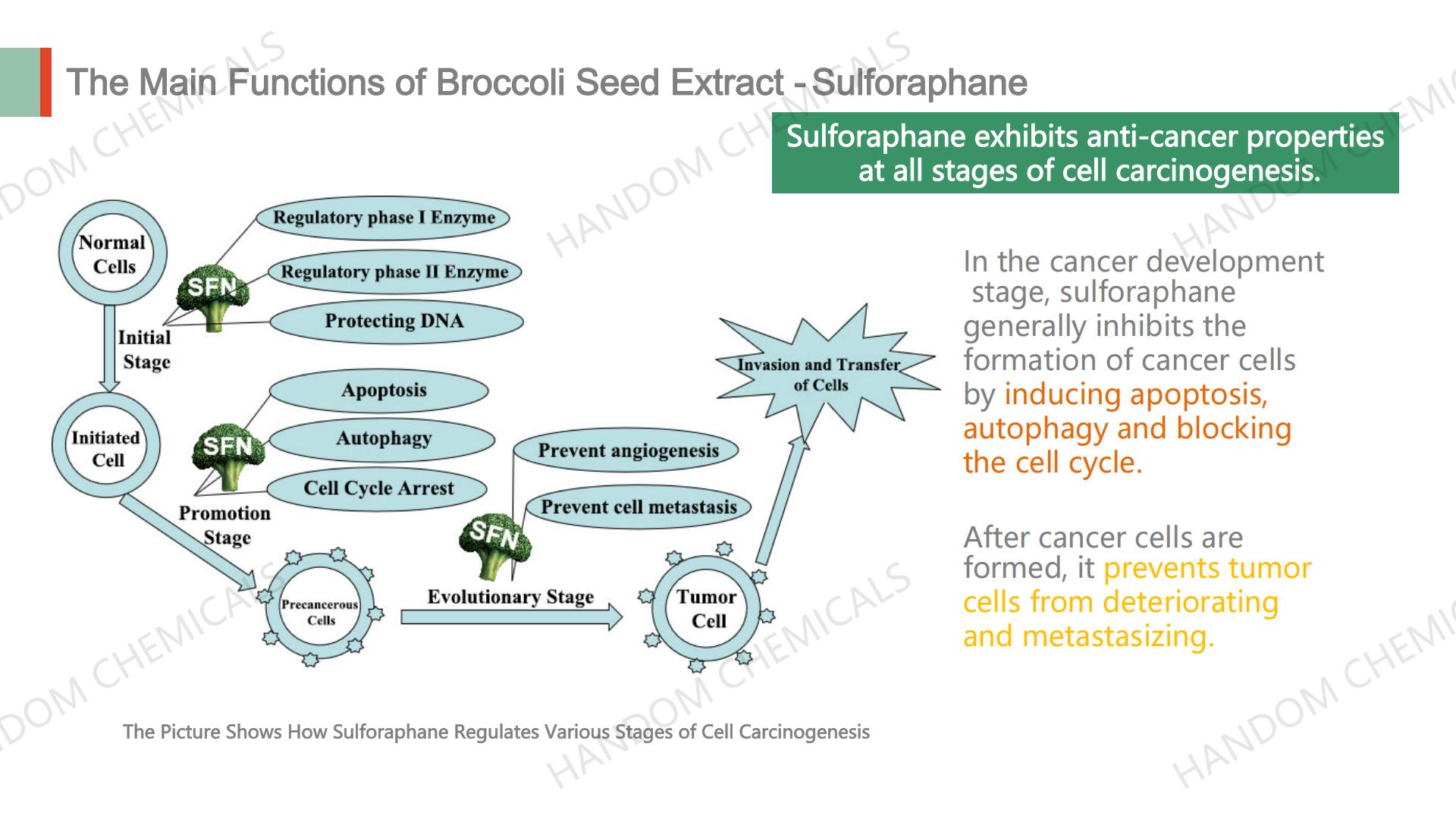
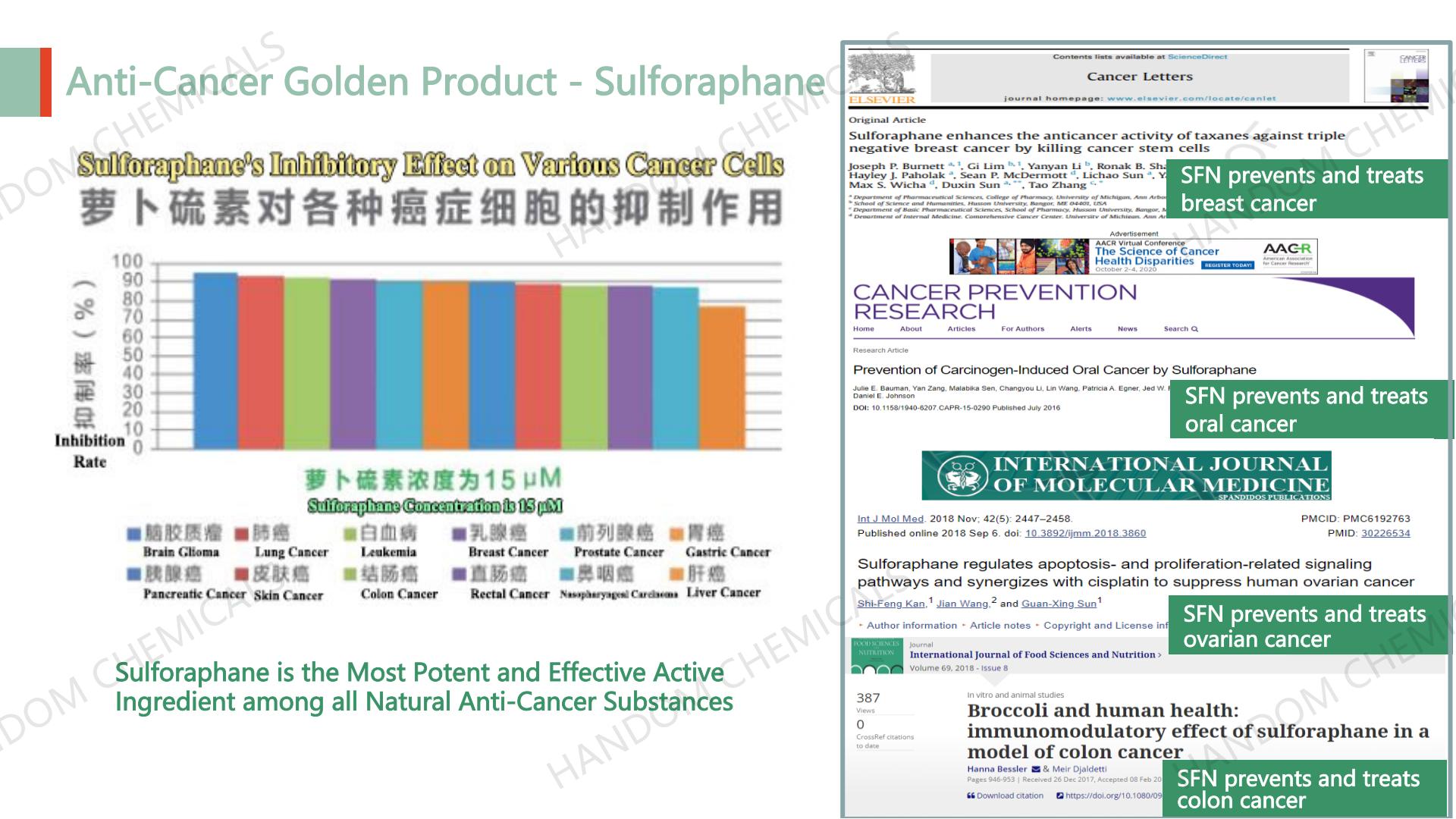
 In June 2020, the Chang Gung Memorial Hospital in Taiwan published a study on the potential role of Nrf2 activators with dual antiviral and anti-inflammatory properties in the management of viral pneumonia (Infect Drug Resist. 2020 Jun 11;13:1735-1741.) The Role of Nrf2 Activation in the New Crown was Proposed for the First Time
In June 2020, the Chang Gung Memorial Hospital in Taiwan published a study on the potential role of Nrf2 activators with dual antiviral and anti-inflammatory properties in the management of viral pneumonia (Infect Drug Resist. 2020 Jun 11;13:1735-1741.) The Role of Nrf2 Activation in the New Crown was Proposed for the First Time
The outbreak of the coronavirus disease (COVID-19) pandemic has placed a huge burden on global healthcare systems, with the death toll reaching tens of thousands. Although several antiviral drugs have been identified and used to inhibit viral replication, the management of cytokine storm is also a critical issue. In this article, we review the literature on candidate drugs for severe acute respiratory syndrome (SARS-CoV-1) and provide a brief overview of a class of drugs with antiviral and anti-inflammatory properties. These molecules mitigate viral infection-induced inflammatory cytokine cascades through their Nrf2 activation capacity and may have additional antifibrotic and antiremodeling properties.
In July 2020, Moscow State University published a research result: Transcription factor Nrf2 as a potential therapeutic target for preventing cytokine storm in patients with COVID-19 (Biochemistry (Mosc). 2020 Jul;85(7):833-837.)
Nrf2 is a key transcription factor responsible for antioxidant defense in many tissues and cells, including alveolar epithelium, endothelium, and macrophages. In addition, Nrf2 acts as a transcriptional repressor, inhibiting the expression of inflammatory cytokines in macrophages.
Severely ill patients infected with COVID-19 often show signs of high oxidative stress and systemic inflammation --- the main cause of death. This article proposes the rationale for using Nrf2 inducers to prevent the development of excessive inflammatory responses in COVID-19 patients.
In September 2020, the Autonomous University of Madrid (UAM) in Spain published a research result: Sulforaphane activation of NRF2 is a strategy to fight COVID-19 (Trends Pharmacol Sci. 2020 Sep;41(9):598-610.) First in Vitro Experiment
Acute respiratory distress syndrome (ARDS) caused by SARS-CoV-2 is mainly the result of a dysregulated host response, followed by damage to alveolar cells and pulmonary fibrosis. Exacerbated proinflammatory cytokine release (cytokine storm) and T lymphocyte reduction (leukopenia) are the most aggressive manifestations. We suggest that a multifaceted anti-inflammatory strategy based on pharmacological activation of nuclear factor erythroid 2p45-related factor 2 (NRF2) can be used to fight the virus. This strategy provides strong cytoprotective effects by restoring redox and protein homeostasis, promoting inflammation resolution, and promoting repair. NRF2 activators such as sulforaphane and bardoxolone methyl are already in clinical trials. The safety and efficacy information of these modulators in humans, as well as their well-documented cytoprotective and anti-inflammatory effects in preclinical models, highlight the potential of this arsenal in the battlefield against COVID-19.
In December 2020, the Berlin Health Research Center in Germany published research results: The efficacy of broccoli and sulforaphane against COVID-19: from hypothesis to proof of concept of three clinical trial cases (World Allergy Organization Journal (2021) 14:100498.) The First Clinical Trial to Prove Effectiveness
A clinical case study describing COVID-19 in a patient raises the hypothesis that Nrf2 interactions with nutrients may help prevent severe COVID-19 symptoms. Broccoli seed capsules containing sulforaphane were taken before the onset of SARS-CoV-2 infection and continued daily for more than a month after the first onset of COVID-19 symptoms and were found to rapidly reduce many symptoms for 6-12 hours with repeated dosing. Double-blind induced cough trials confirmed the rapid onset of action of the capsules (less than 10 minutes) when the patient was stable but not taking the broccoli capsules and still had cough and nasal congestion; a second clinical case with a lower dose of broccoli conducted during a cytokine storm confirmed the clinical benefit already observed; a third clinical case showed similar effects at the onset of symptoms. In the first clinical trial, we used doses of sulforaphane below 600 μmol per day, however, such high doses may cause pharmacological effects and need to be carefully examined before any studies are conducted. The rapid onset of effect is most likely mediated through the TRPA1 channel. These experimental clinical cases represent proof of concept and confirm the hypothesis that nutrients that interact with Nrf2 are effective in COVID-19, however, this can not be used in practice until further safety data are available and needs to be confirmed by appropriate trials of efficacy and safety.
In December 2020, the International Allergic Rhinitis and Its Impact on Asthma Medical Organization (ARIA group) published a review article: Nrf2-interacting nutrients and COVID-19: Time to study and develop adaptive strategies (Clin Transl Allergy. 2020 Dec 3;10(1):58.)
COVID-19 mortality rates vary widely between and within countries. Some regions with very low mortality rates, such as East Asia, Central Europe, the Balkans, and Africa, have a common feature of consuming large amounts of fermented foods, the intake of which is strongly associated with the Nrf2 antioxidant transcription factor. There are many nutrients that interact with Nrf2 (Berberine, Curcumin, Epigallocatechin Gallate, Genistein, Quercetin, Resveratrol, Sulforaphane) that have similar effects in reducing insulin resistance, endothelial damage, lung damage, and cytokine storms. They also act on the same mechanisms (mTOR: Mammalian Target of Rapamycin; PPARγ: Peroxisome Proliferator-Activated Receptor Gamma; NF-kB: Nuclear Factor kappa B; ERK: Extracellular Regulated Protein Kinases, and eIF2α: Elongation Initiation Factor 2α). Therefore, they may be important in mitigating the severity of COVID-19, acting through ER stress or the ACE-angiotensin-II-AT1R axis (AT1R) pathway. Many of the nutrients that interact with Nrf2 also interact with TRPA1 and/or TRPV1. Interestingly, the geographic regions with very low COVID-19 mortality rates are the ones with the lowest obesity rates (sub-Saharan Africa and Asia), so it is tempting to suggest that foods and nutrients that interact with Nrf2 could rebalance insulin resistance and have a significant impact on COVID-19 severity, and therefore, consumption of these foods could potentially restore the optimal natural balance of the Nrf2 pathway and could play a large role in reducing COVID-19 severity.
In March 2021, the results of a large-scale epidemiological survey by the International Allergic Rhinitis and Its Impact on Asthma (ARIA group) showed that sulforaphane contained in cabbage and fermented vegetables can fight against the new coronavirus by activating Nrf2: from the heterogeneity of mortality rates in various countries to candidate strategies for alleviating severe COVID-19 (Allergy. 2021 Mar;76(3):735-750.)
COVID-19 mortality rates vary widely between countries and between different regions of the same country. Some countries with very low mortality rates, such as East Asia, Central Europe or the Balkans, have a common feature: the consumption of a large amount of fermented foods. Fermented vegetables or cabbage have been associated with low mortality in European countries, despite biases when examining ecological studies. SARS-CoV-2 binds to its receptor angiotensin-converting enzyme 2 (ACE2), and ACE2 downregulation due to SARS-CoV-2 binding enhances the angiotensin II receptor type 1 (AT1R) axis associated with oxidative stress, which can lead to insulin resistance and lung and endothelial damage, two serious consequences of COVID-19. Nuclear factor (erythroid-derived 2)-like 2 (Nrf2) is the most potent antioxidant in humans and can block the AT1R axis in particular. Cabbage contains the precursor of sulforaphane, which is the most active natural activator of Nrf2. Fermented vegetables contain many lactobacilli, which are also potent Nrf2 activators. Three examples are: Korean kimchi, Westernized food, and the ghetto paradox. It has been proposed that fermented cabbage is a proof-of-concept dietary manipulation that can enhance Nrf2-related antioxidant effects and help mitigate the severity of COVID-19.
In March 2022, a study by Johns Hopkins University in the United States showed that sulforaphane showed antiviral activity against pandemic SARS-CoV-2 and seasonal HCoV-OC43 coronaviruses in vitro and mouse experiments (Commun Biol. 2022 Mar 18;5(1):242.) Direct Evidence
Severe acute respiratory syndrome coronavirus 2 (SARS-CoV-2), which causes coronavirus disease 2019 (COVID-19), has triggered a global health crisis. Currently, there are limited therapeutic options for preventing and treating SARS-CoV-2 infection. We evaluated the antiviral activity of sulforaphane (SFN), the major bioactive phytochemical derived from glucoraphanin, a natural precursor found in high concentrations in cruciferous vegetables. SFN inhibited the in vitro replication of six strains of SARS-CoV-2, including Delta and Omicron, and the seasonal coronavirus HCoV-OC43. Furthermore, sulforaphane and Remdesivir acted synergistically in vitro to inhibit coronavirus infection. Prophylactic administration of sulforaphane to K18-hACE2 mice prior to intranasal infection with SARS-CoV-2 significantly reduced viral loads in the lungs and upper respiratory tract and reduced lung injury and lung pathology compared with untreated infected mice. Sulforaphane treatment reduced immune cell activation in the lungs, including significantly reduced recruitment of myeloid cells and decreased T cell activation and cytokine production. Our results suggest that sulforaphane should be explored as a potential agent for the prevention or treatment of coronavirus infection.
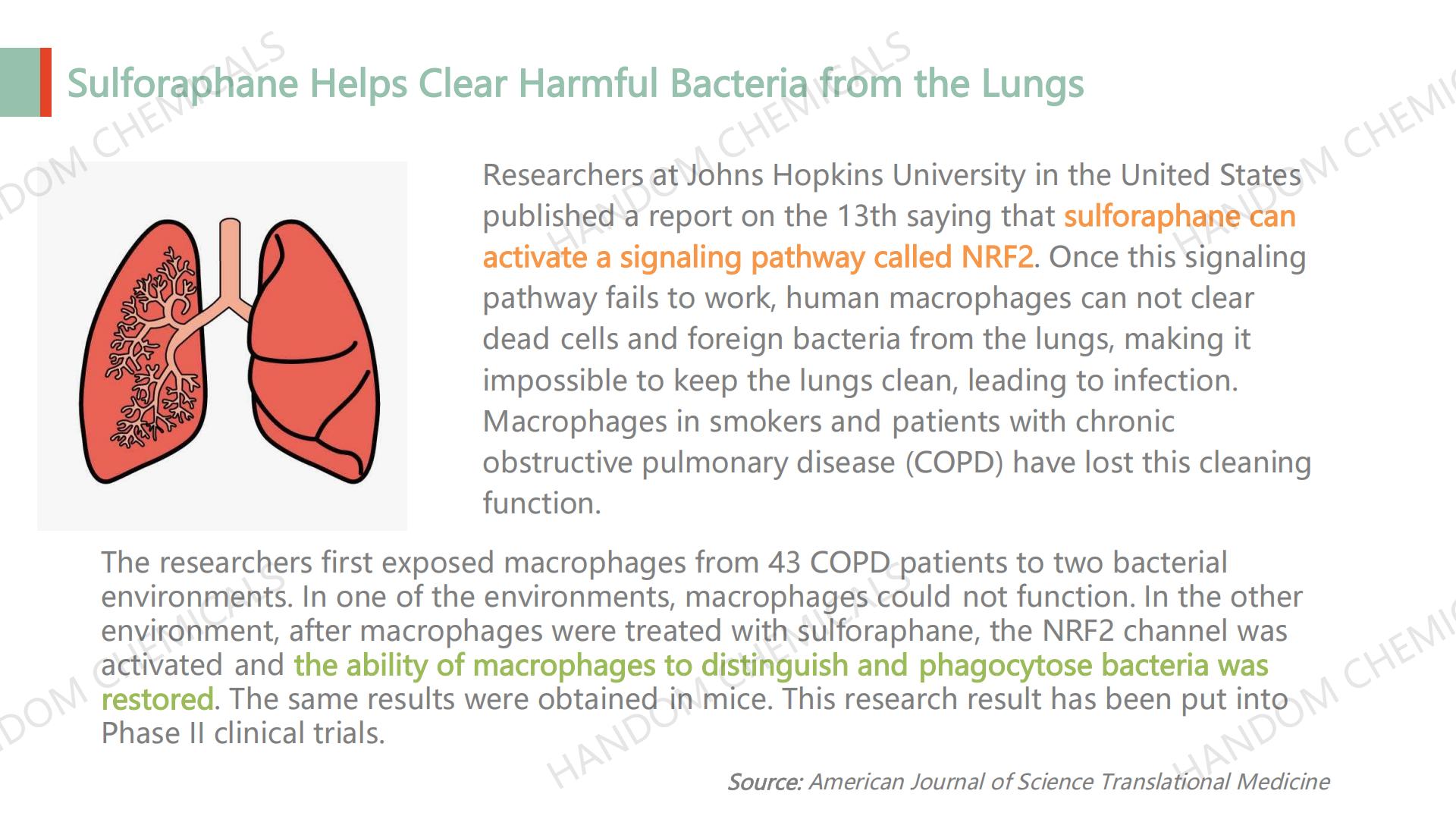
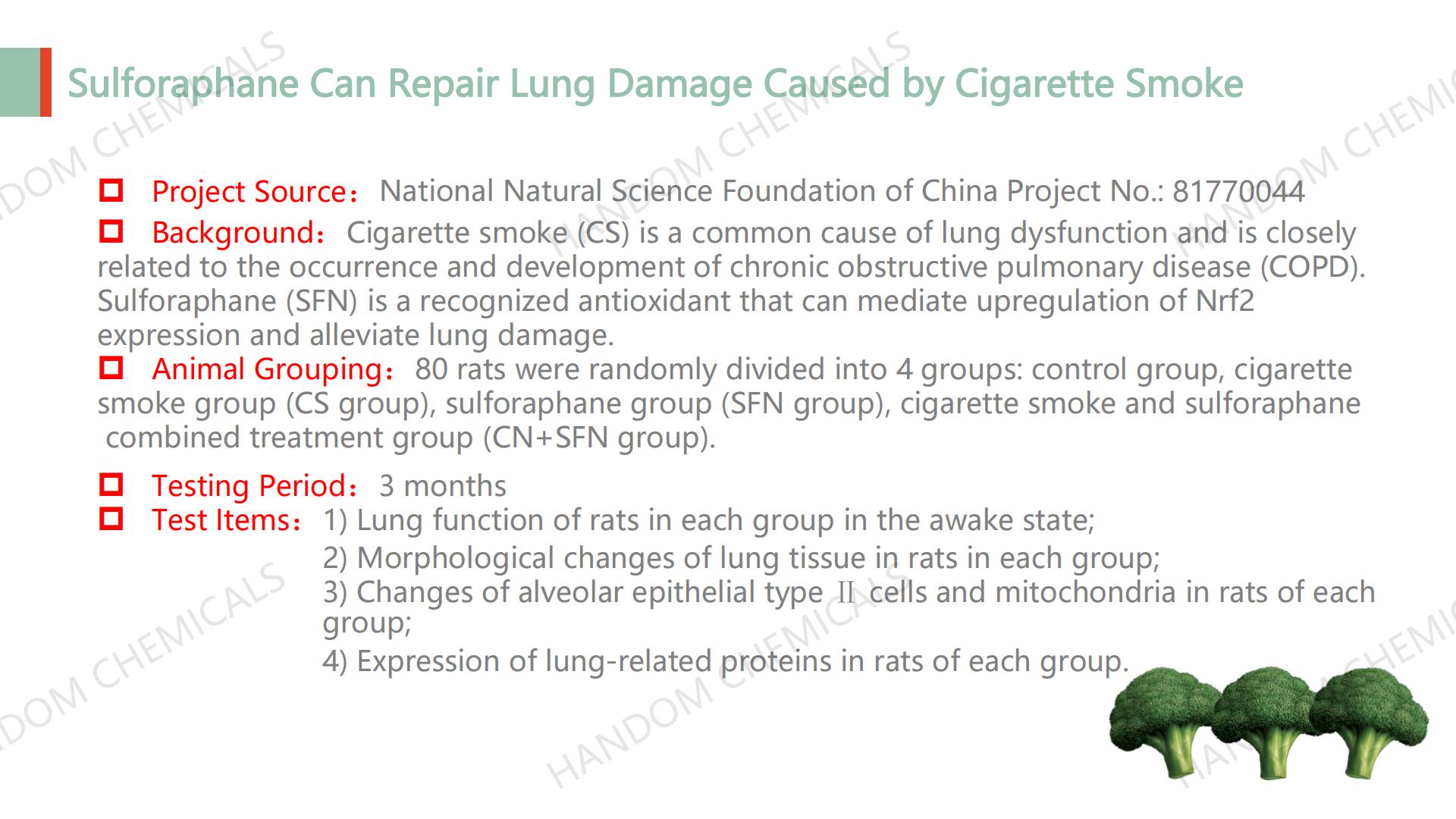

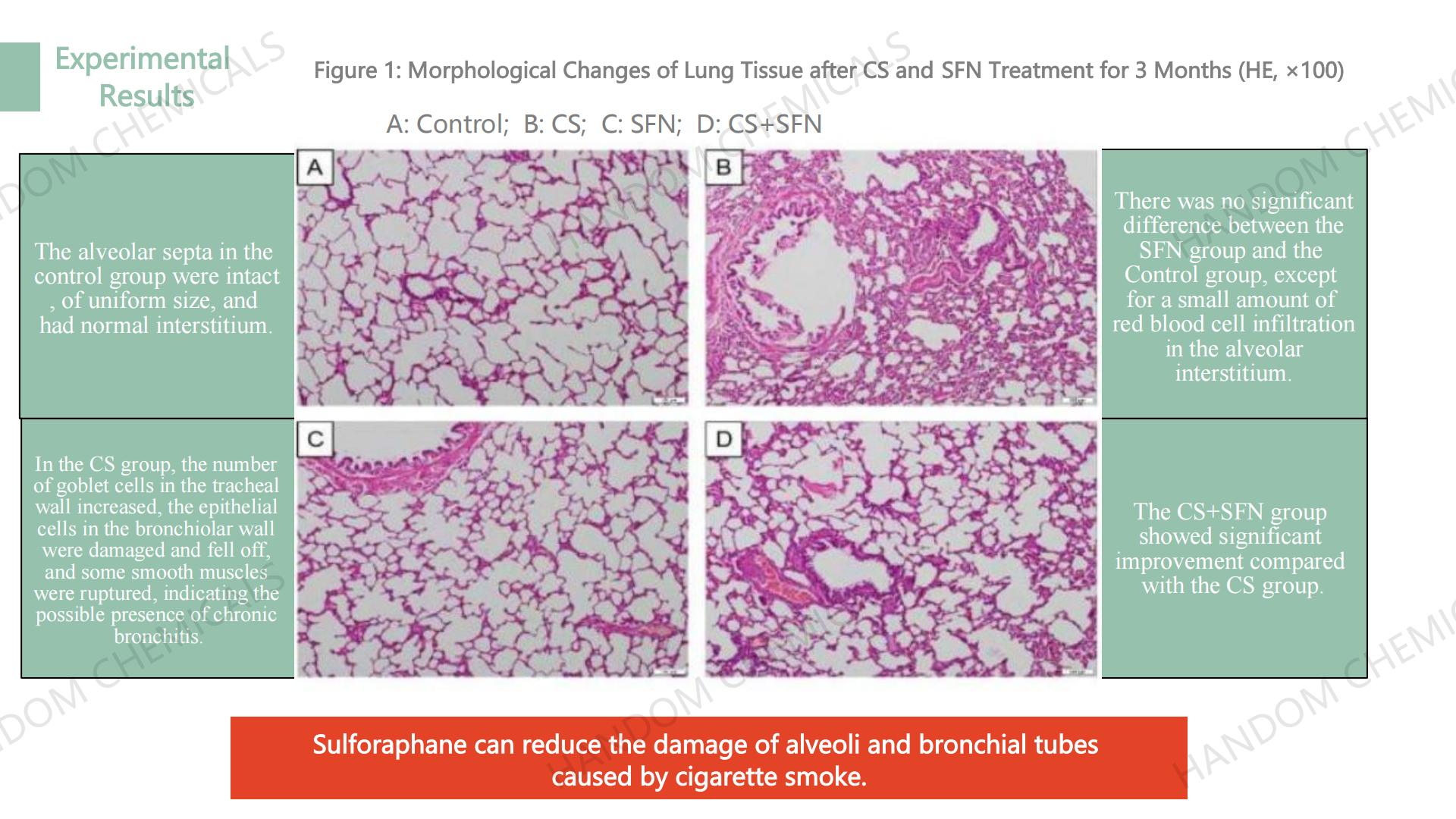
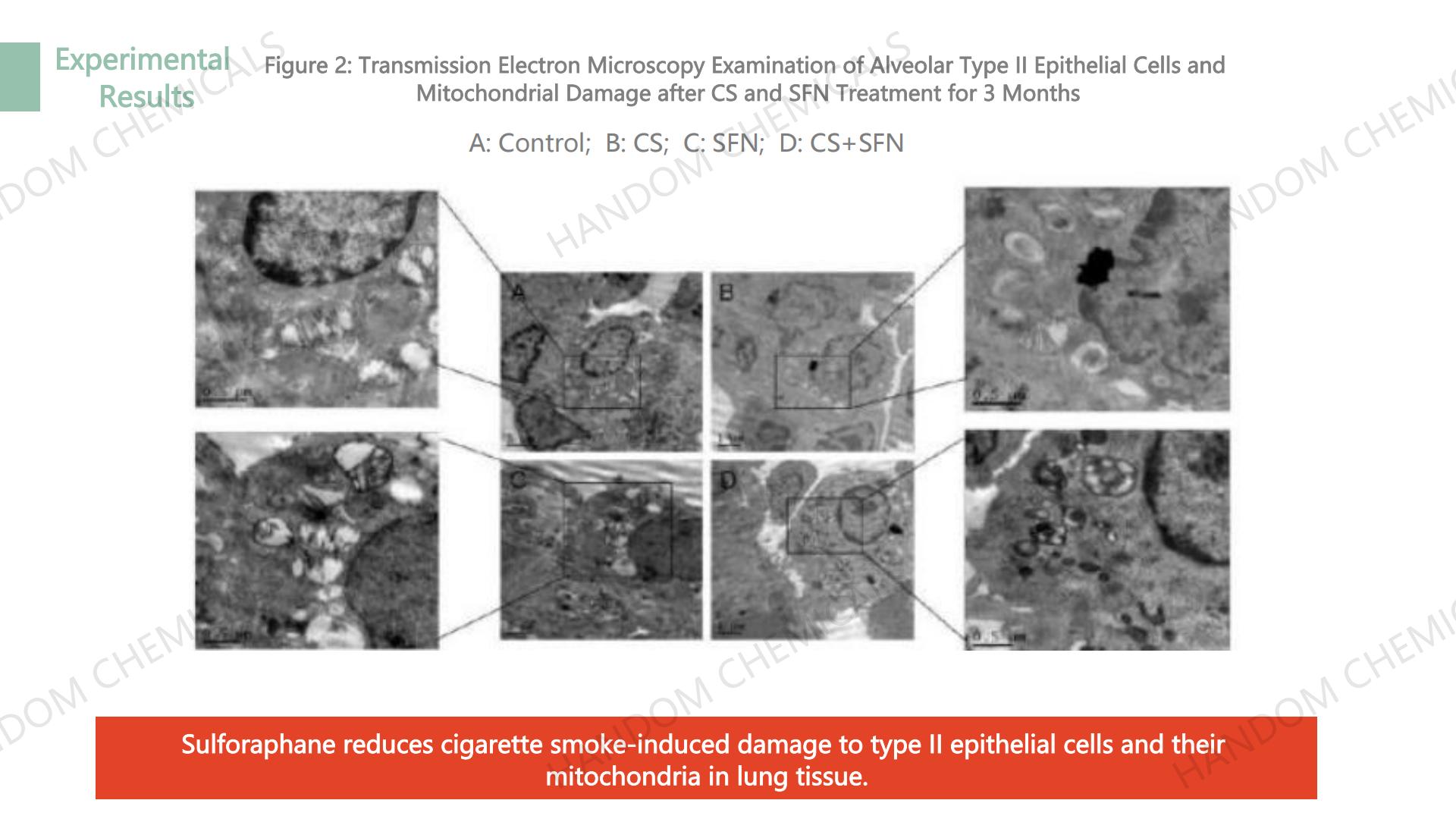
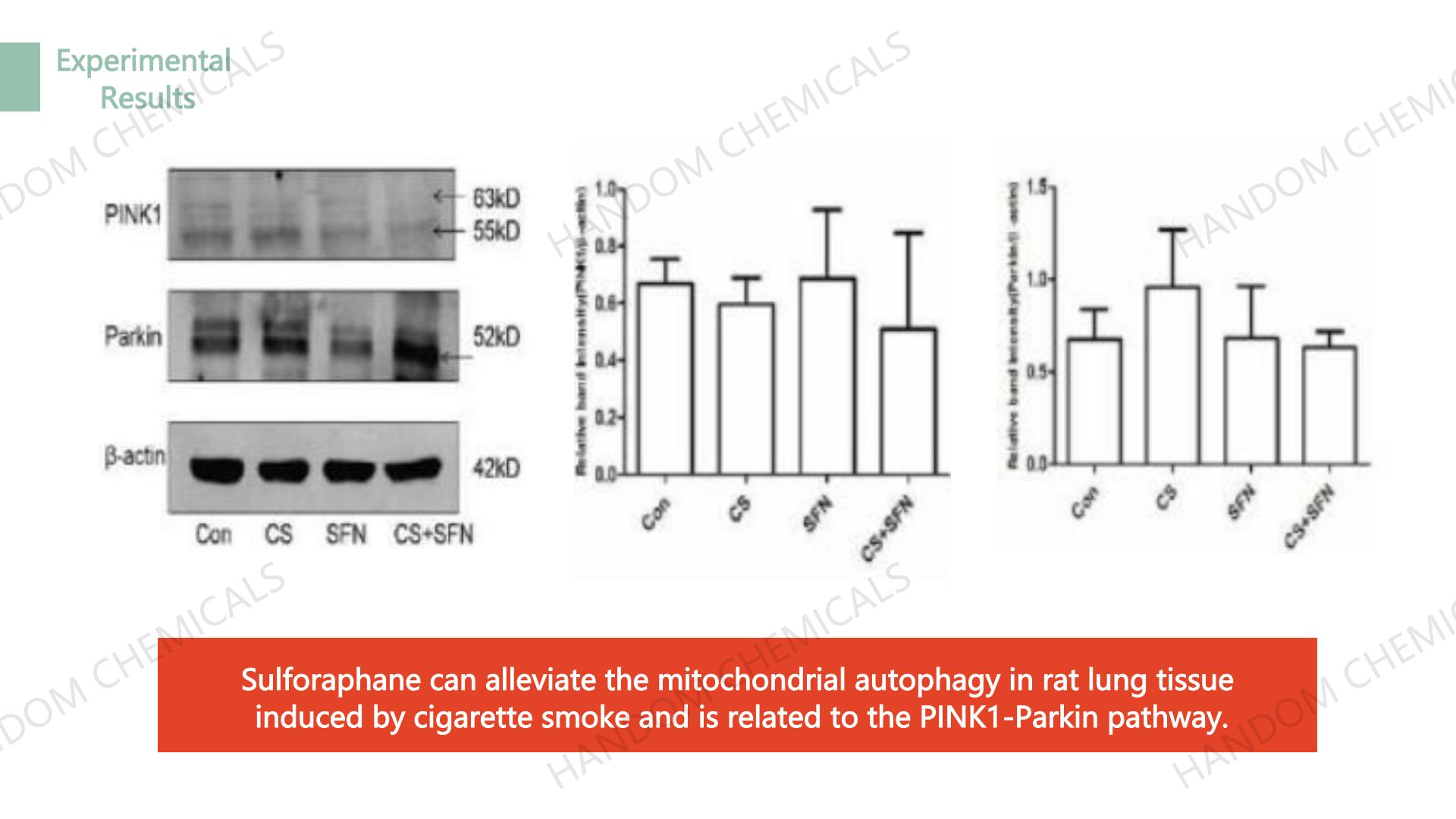
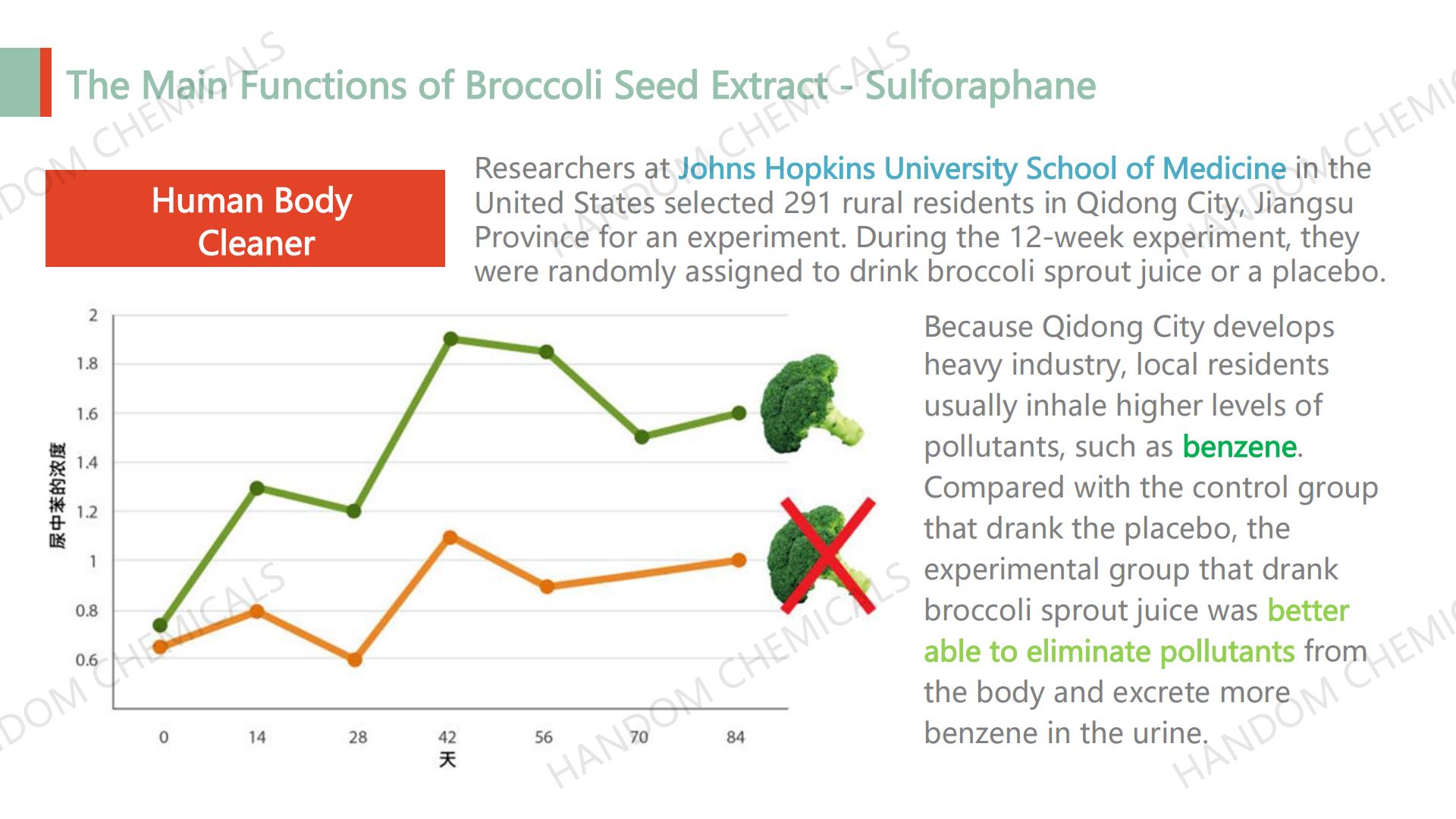
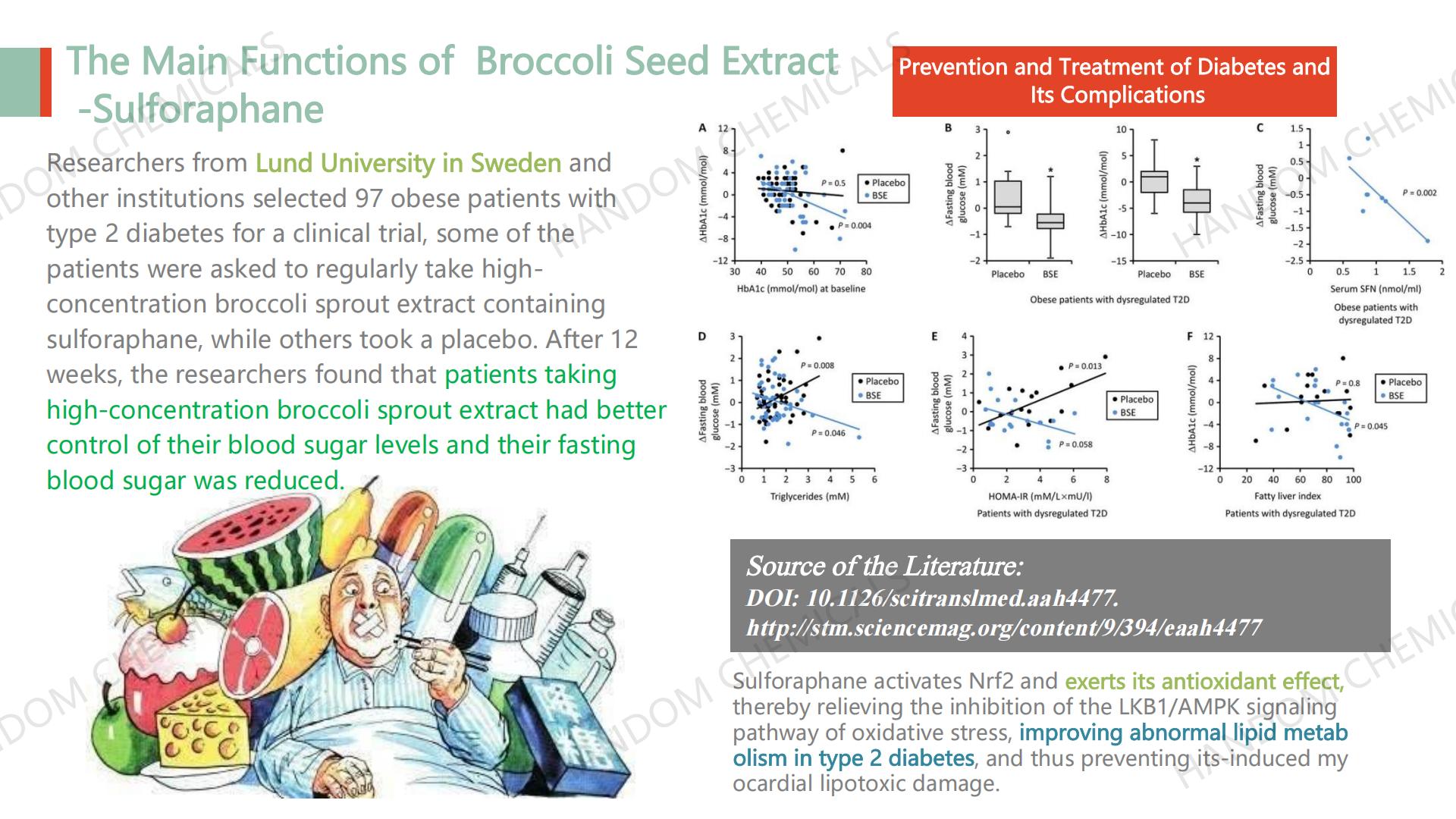
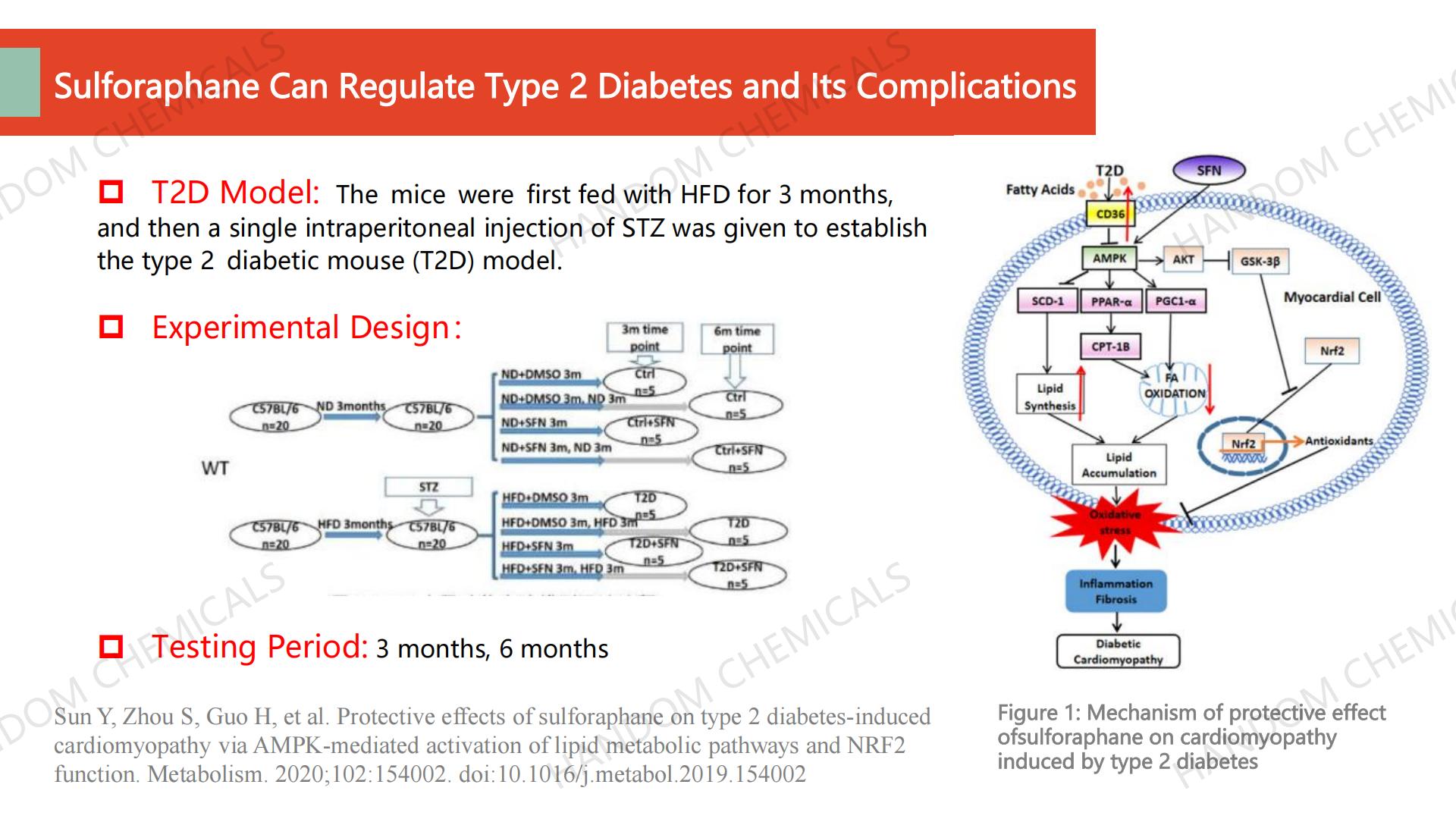
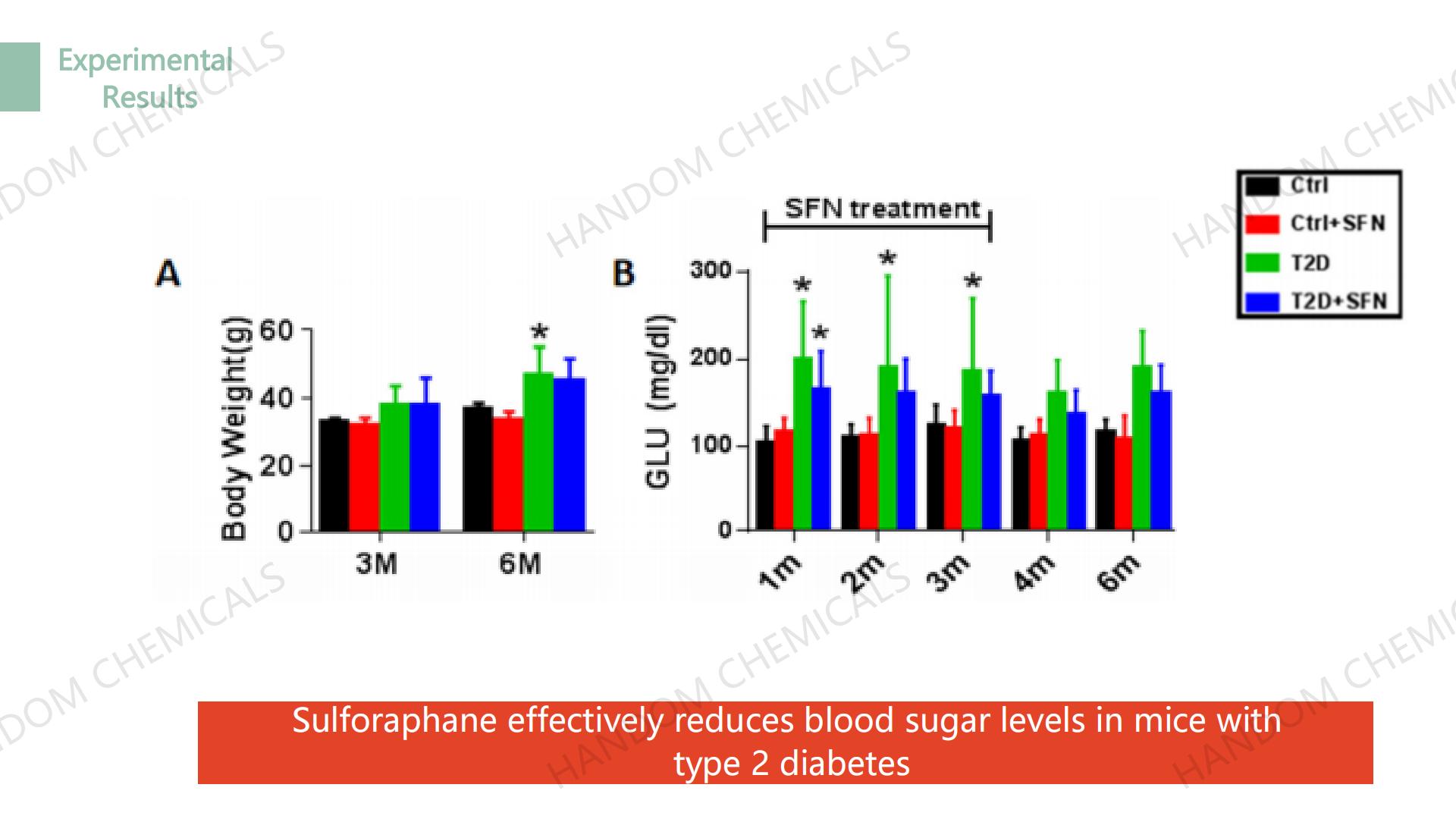
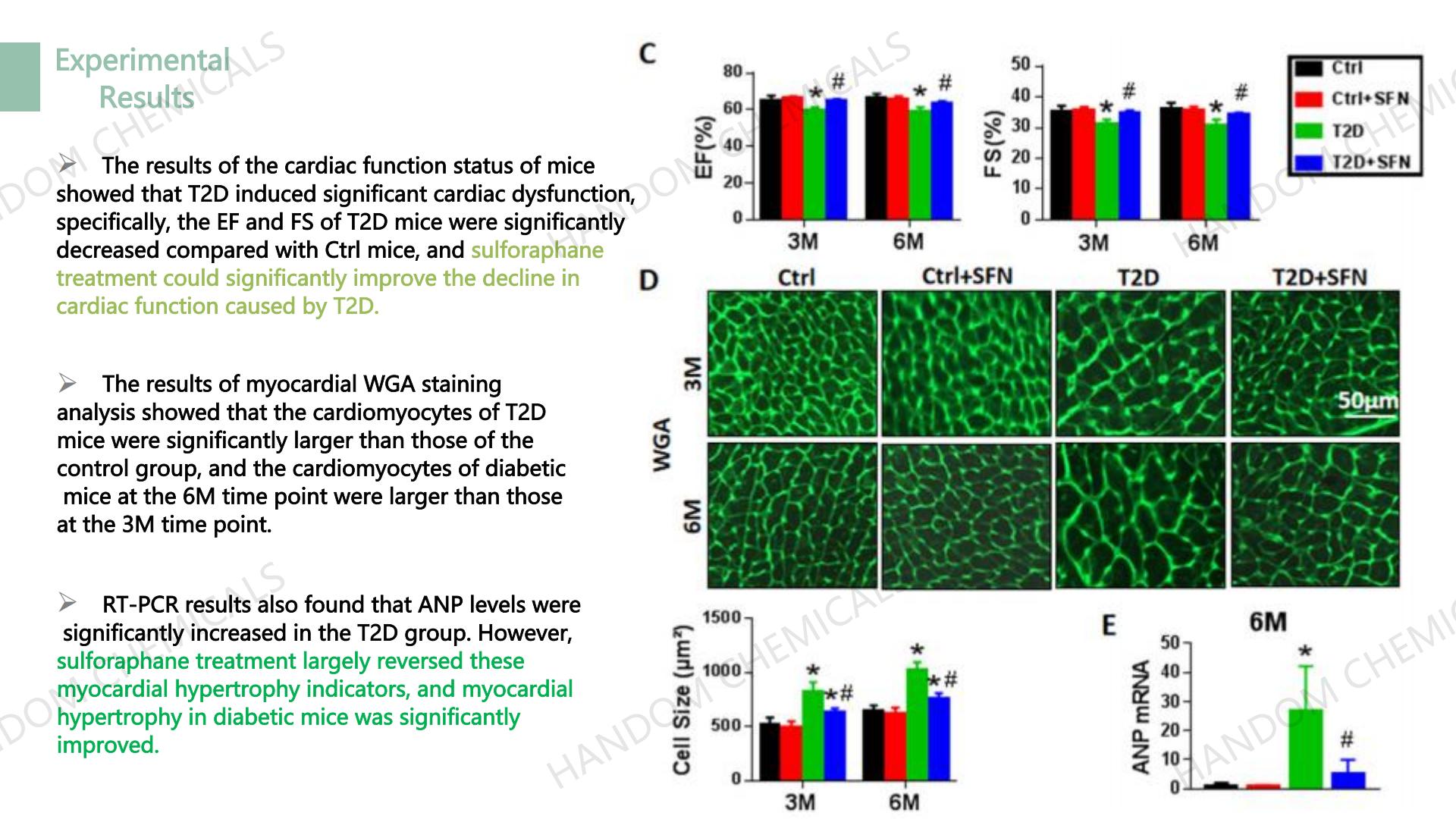
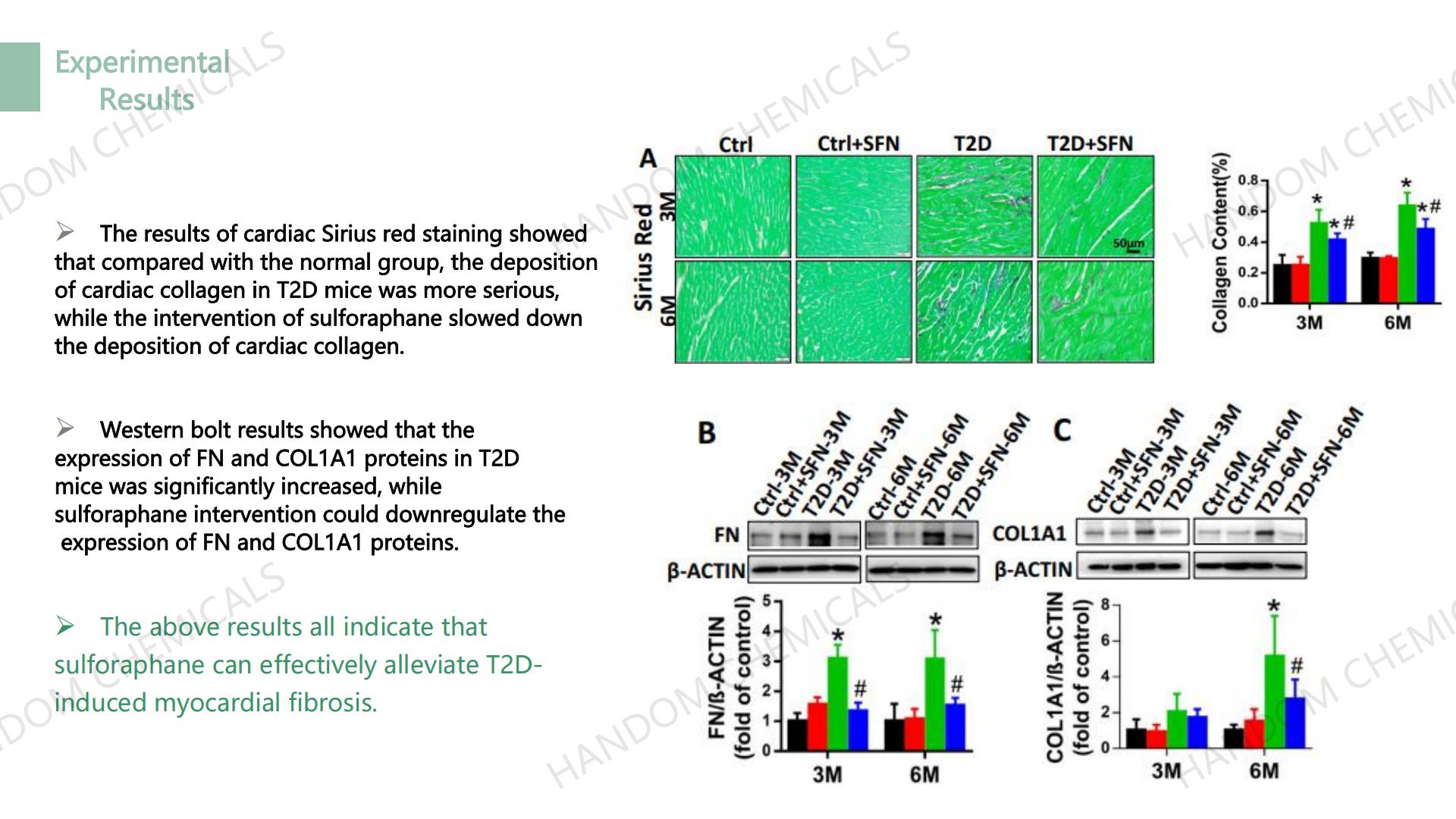
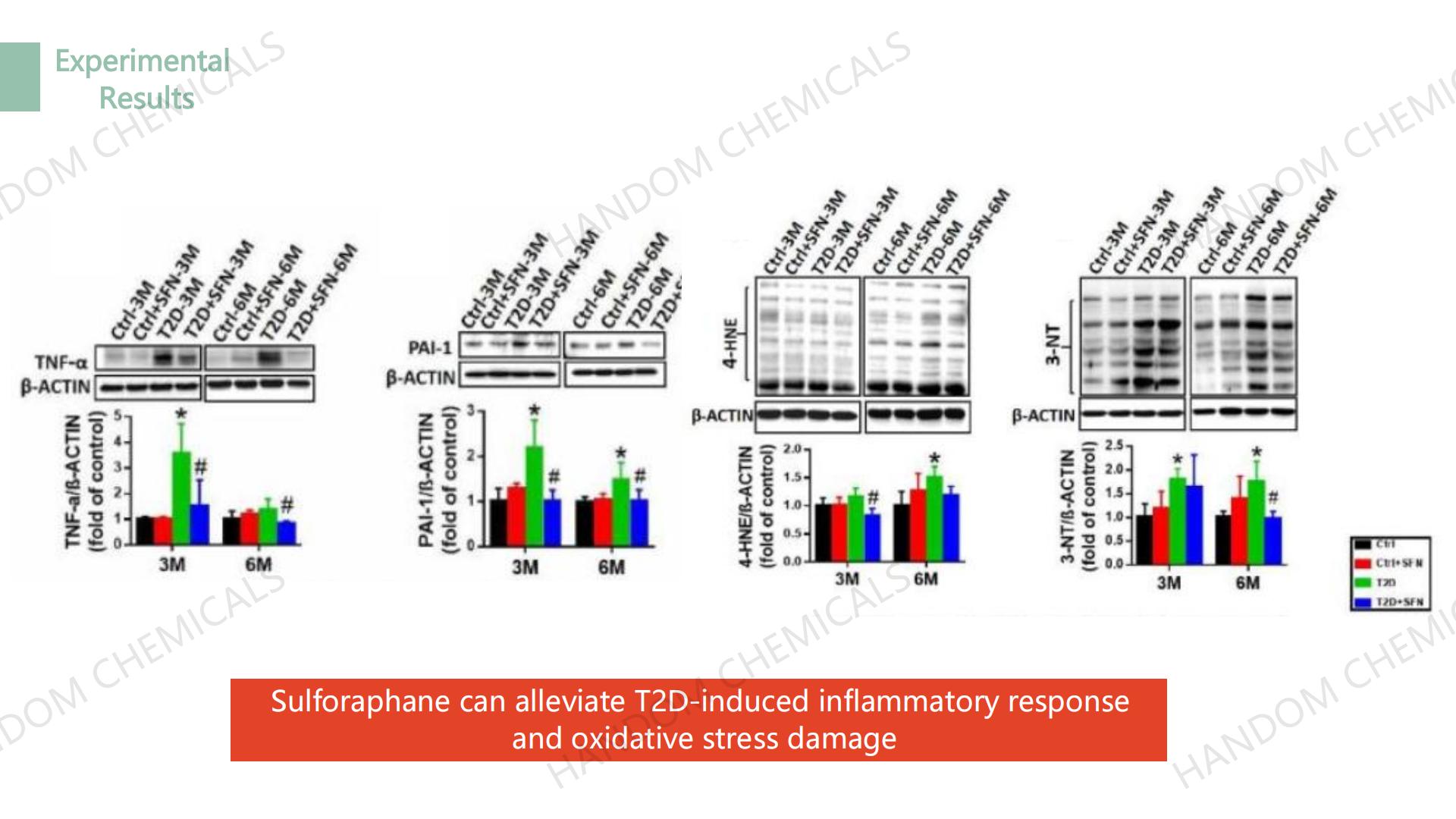
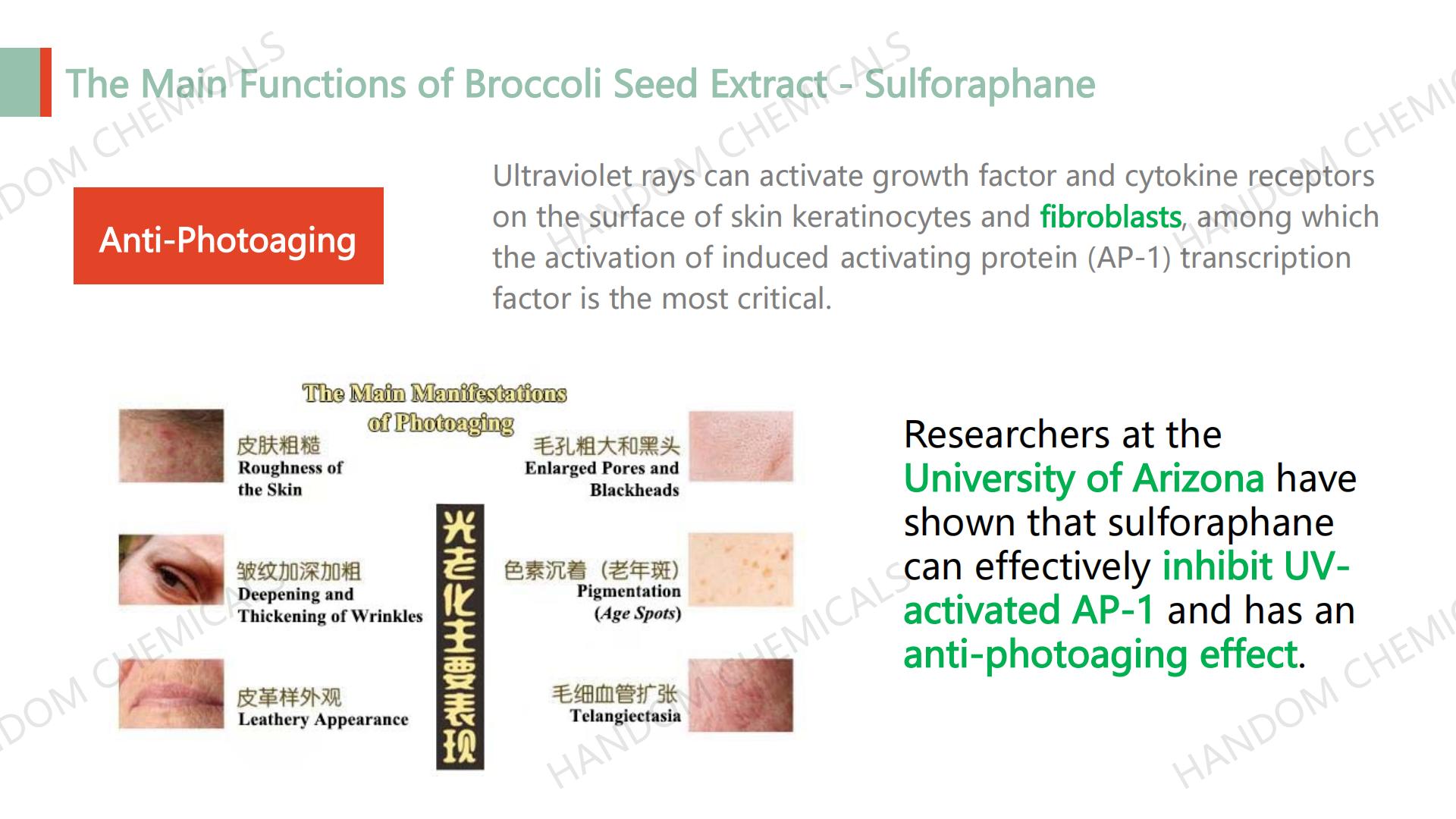
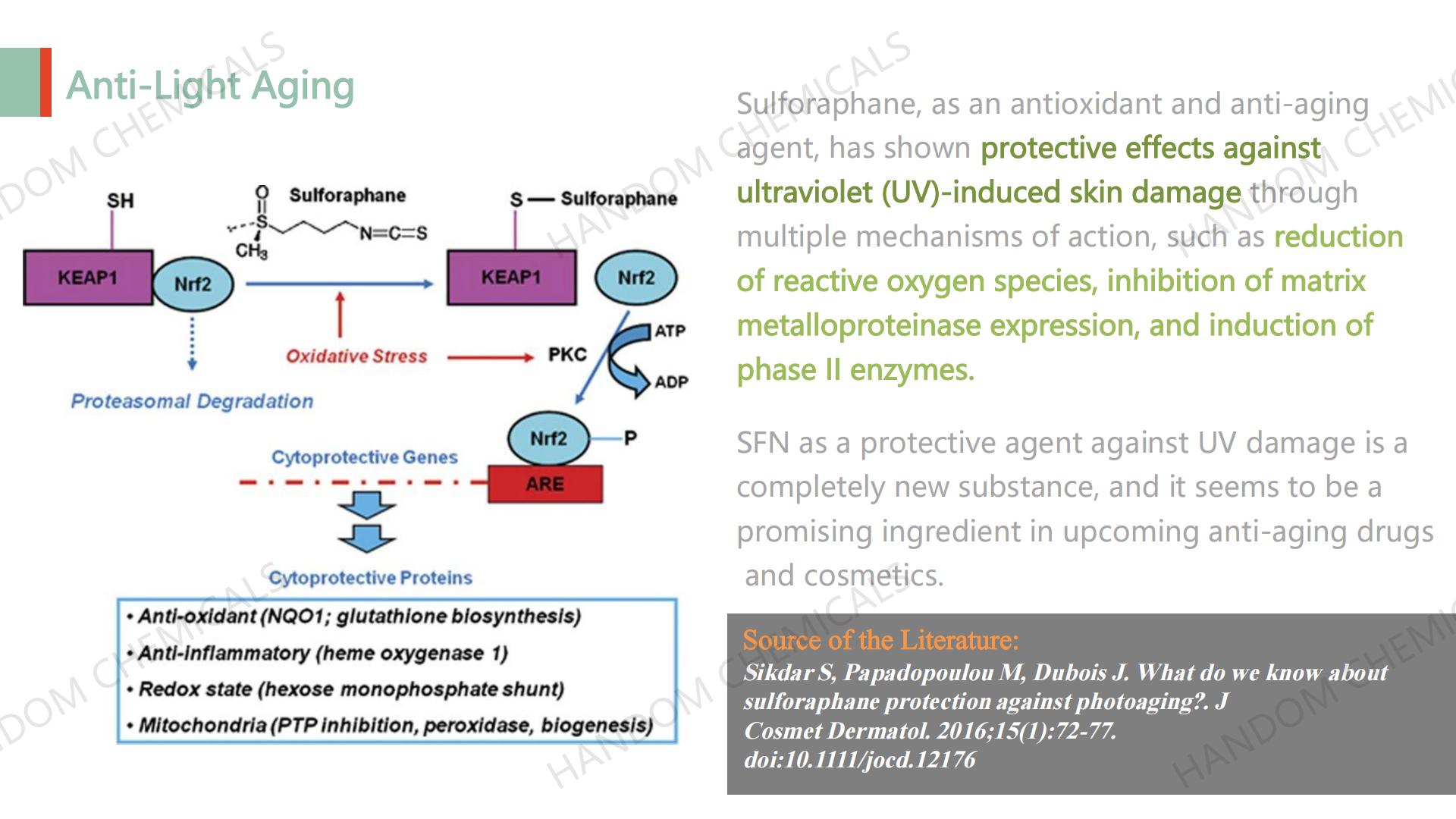
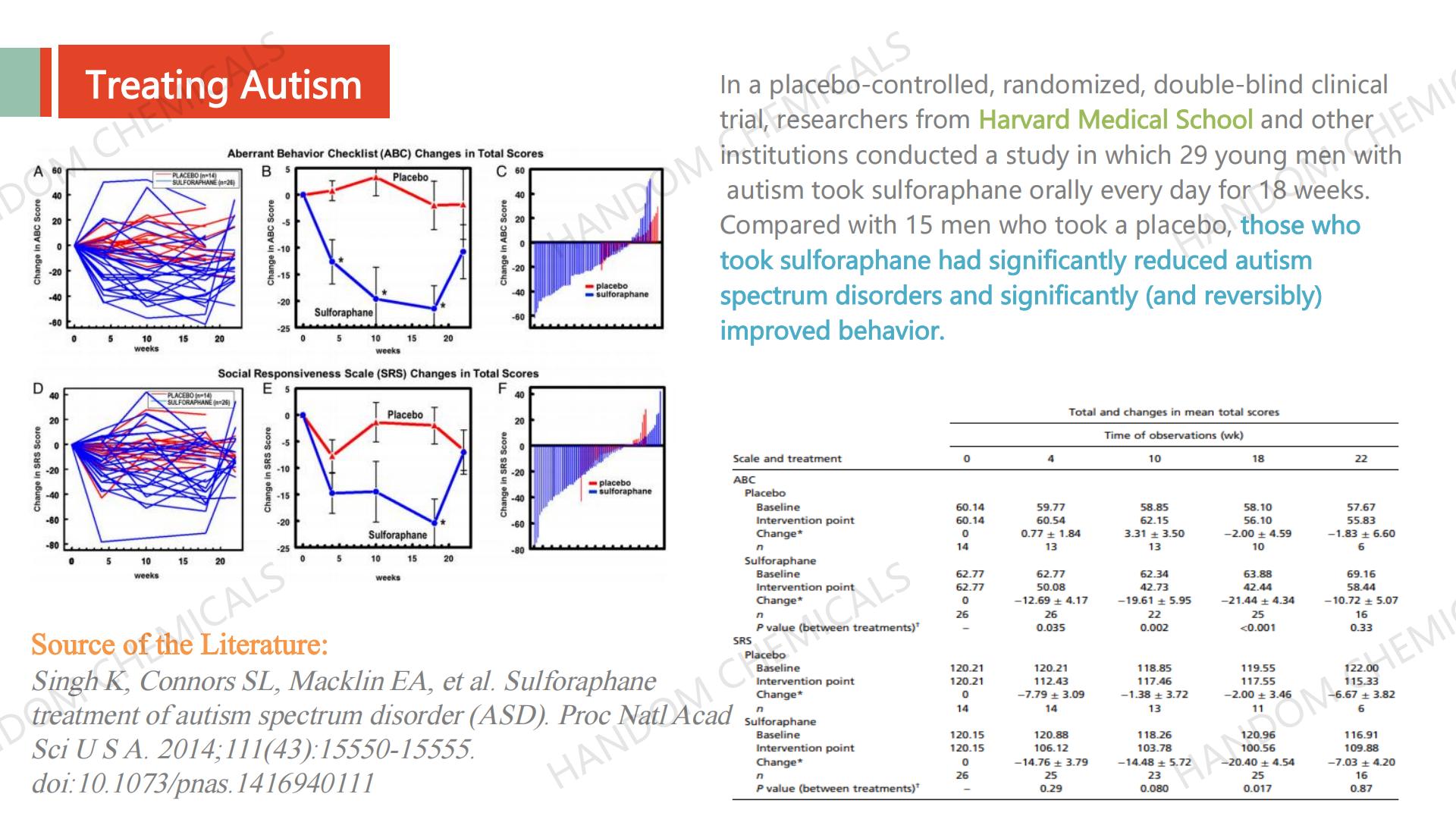
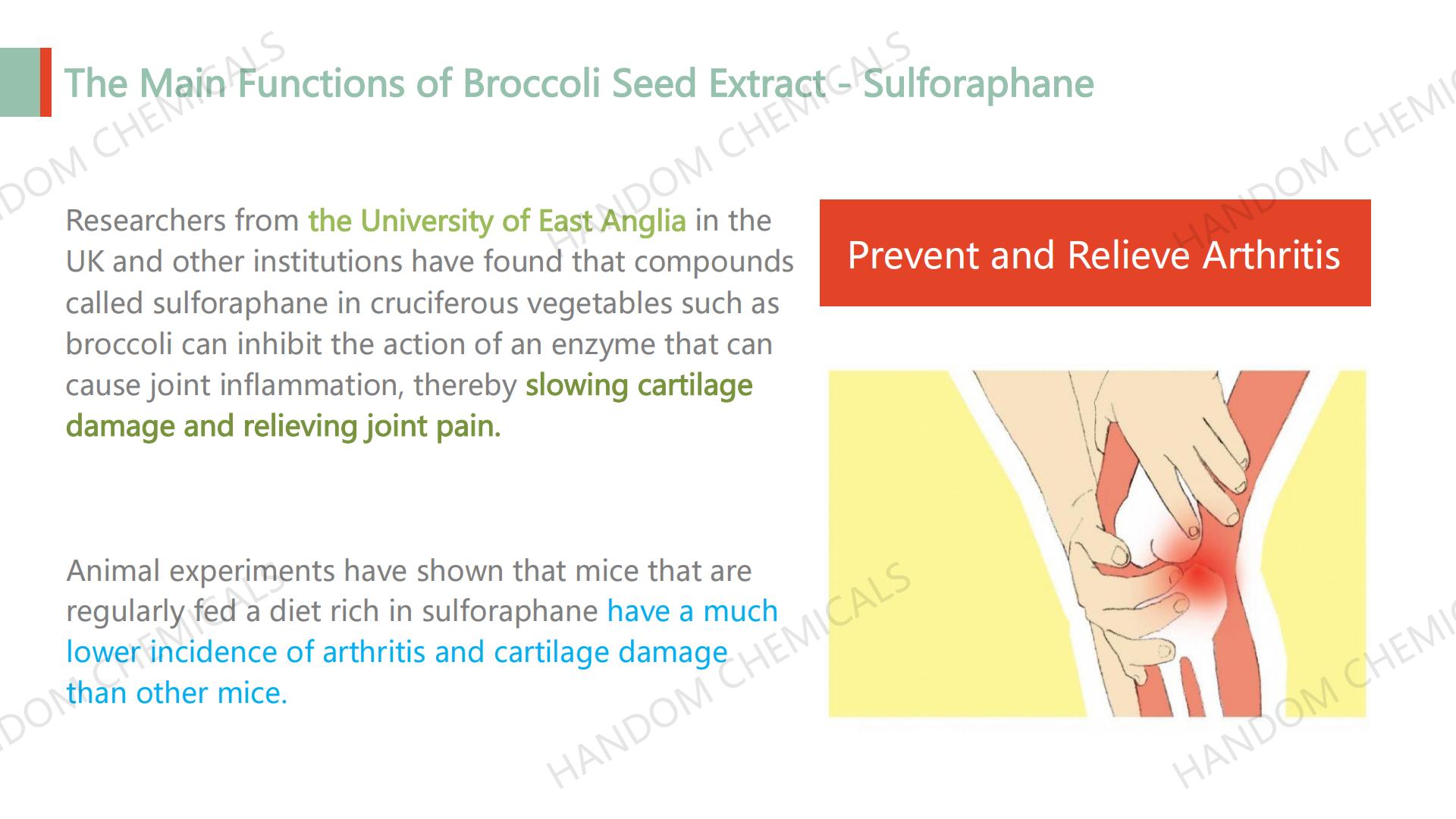
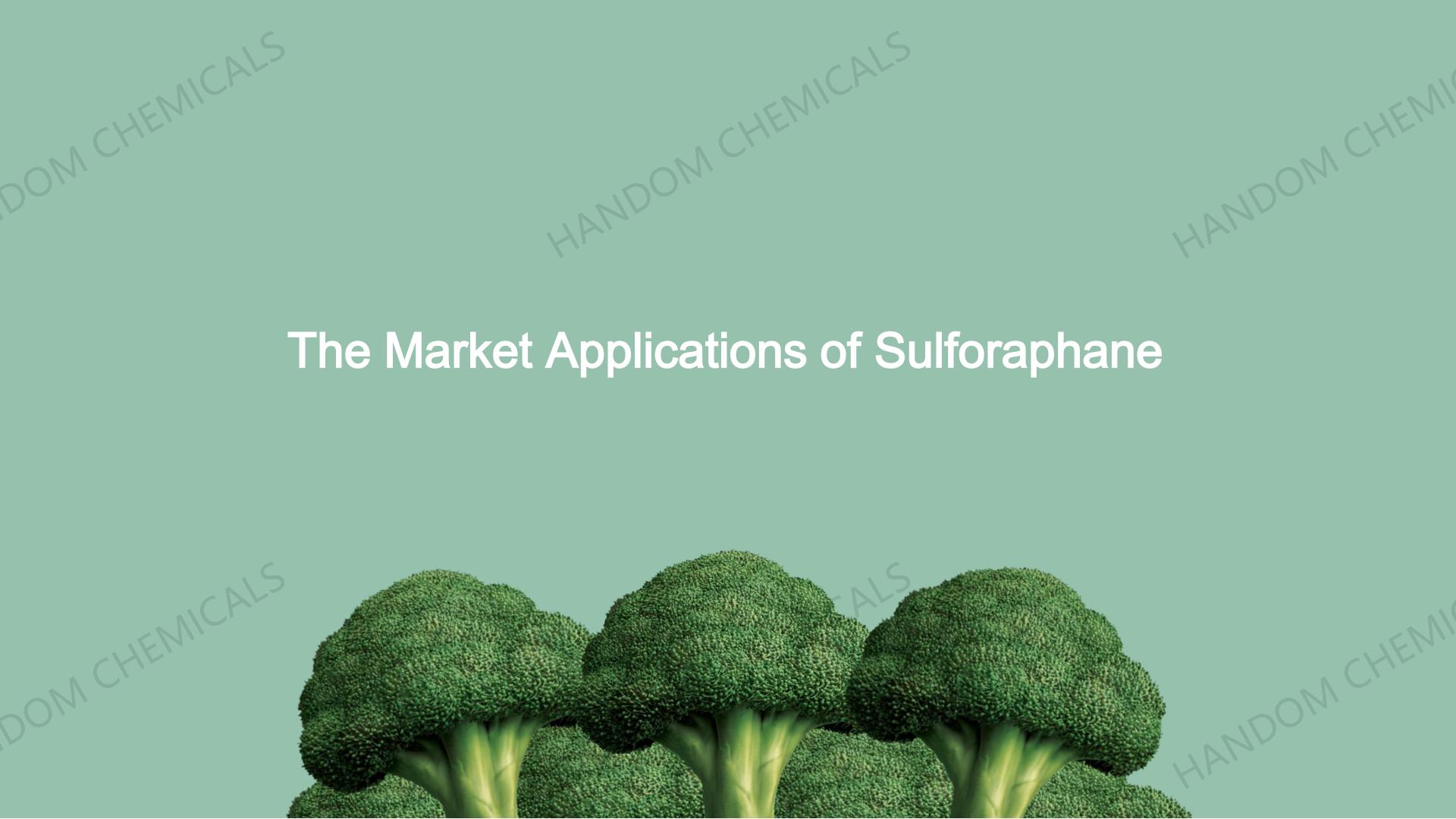
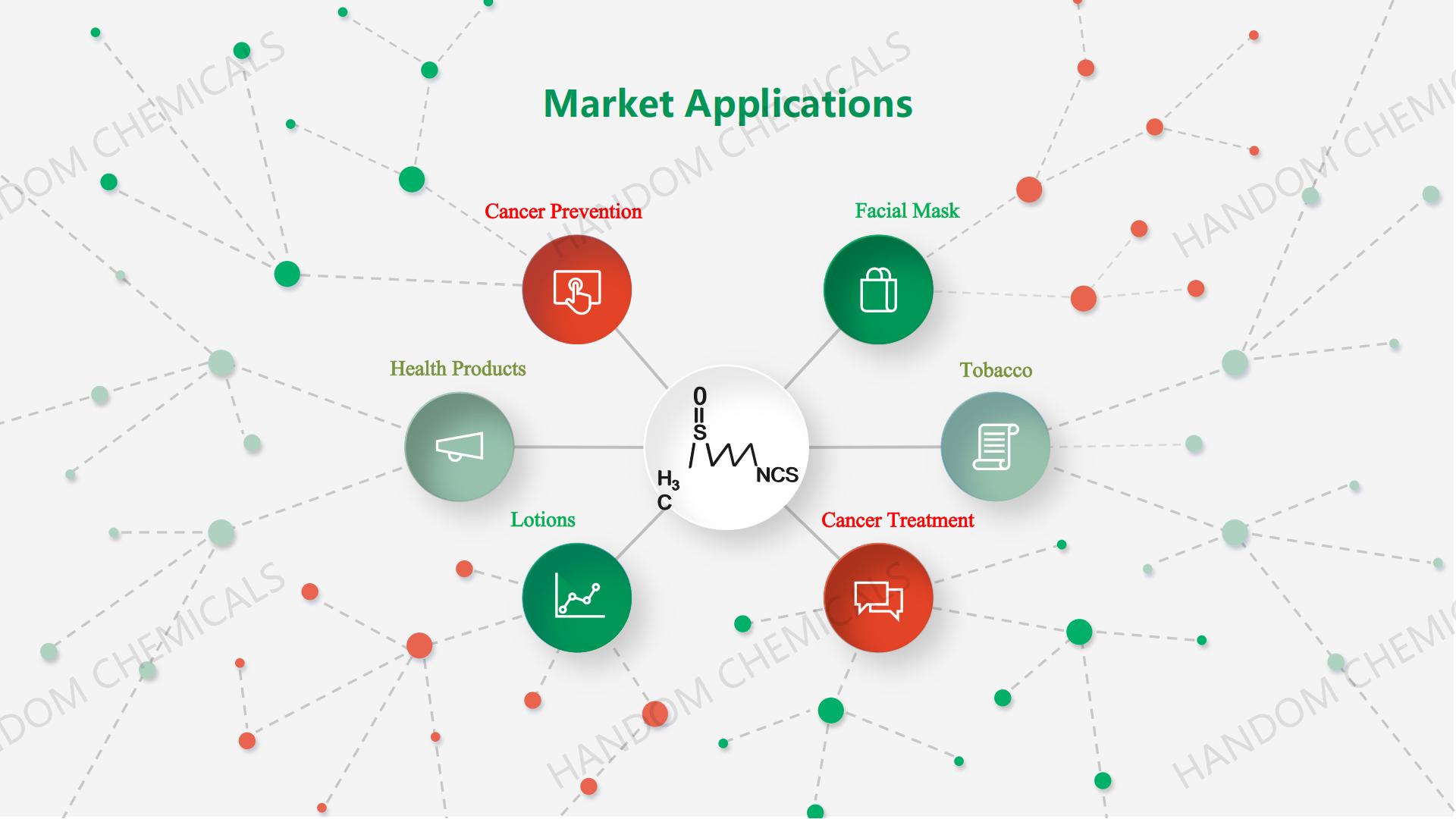
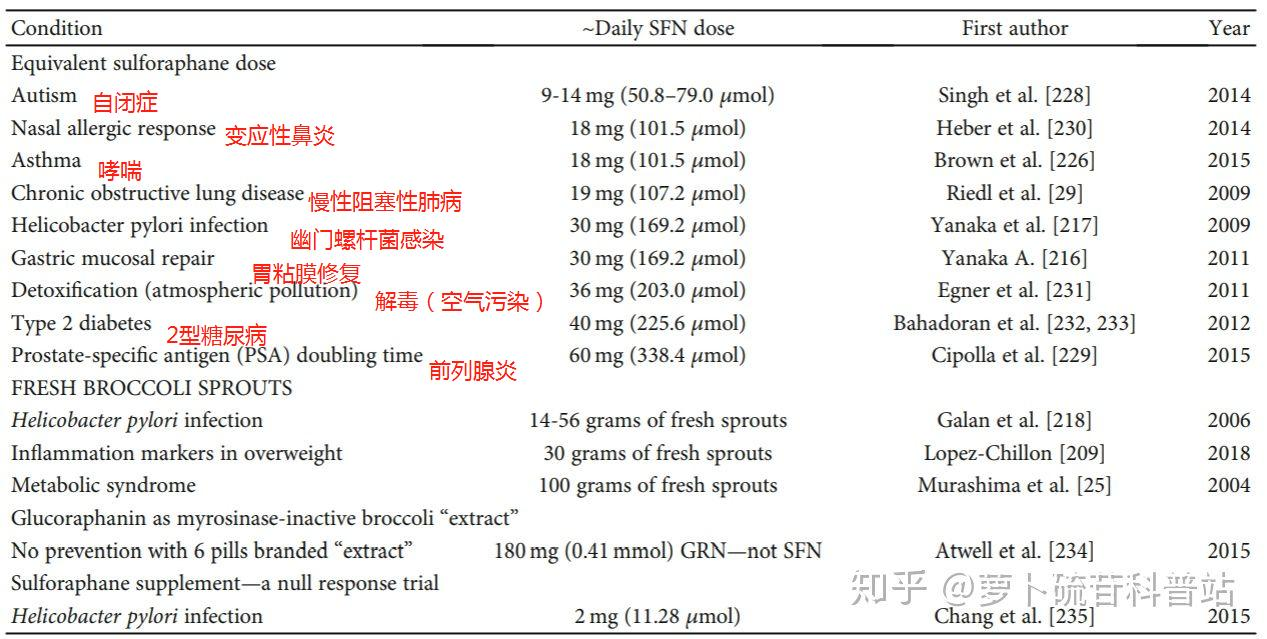
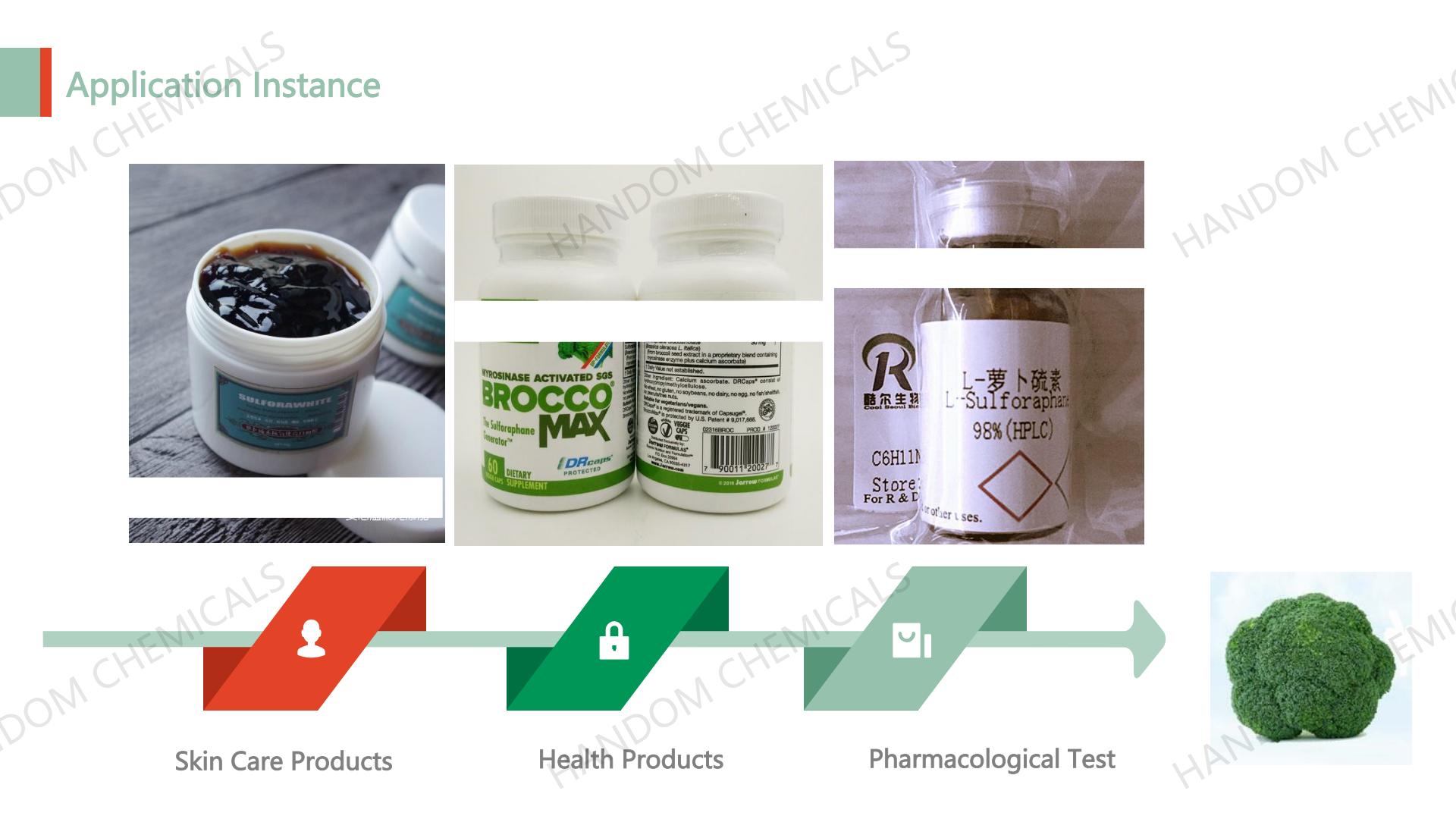
Packaging:
① Net Weight:
10g, 20g, 50g, 100g, 500g, 1kg or customized.
② Packaging Material:
Inner packing food grade PE bag, outer aluminum foil bag.
Storage Conditions:
Store in a sealed container in a cool dry place, away from light. The recommended long-term storage temperature is below -18°C.
Shelf Life:
18 months if stored strictly in accordance with the above storage conditions.
